3 Sep – 8 Dec 2024
An Opulence of Squander
-
Weiyi Chang
CuratorWeiyi Chang is a writer and curator based in Toronto. Currently the 2023-24 Writer-in-Residence at Gallery 44, Chang’s research centres around the nexus between the cultural, social, economic, and political forces that sanction ecological violence, including climate change and biodiversity loss. Her writing has been widely published and she has curated projects in Canada, Germany, and the United States. Chang was a 2019-20 Helena Rubinstein Curatorial Fellow at the Whitney Museum of American Art’s Independent Study Program. She holds a MA in Critical and Curatorial Studies from the University of British Columbia.
Read More
-
Lorna Brown
Lorna Brown is a Vancouver-based visual artist, curator, writer and editor. Brown is a founding member of Other Sights for Artists’ Projects, and is an ongoing member of the Other Sights Producer team. She was the Director/Curator of Artspeak Gallery from 1999 to 2004, an artist-run centre focusing on the relationship between visual art and writing. Between 2015 and 2022, she was Acting Director/Curator at the Belkin, curating exhibition series such as Beginning With the Seventies that explored the relationship between art, archives and activism. Brown has exhibited her work internationally since 1984, and has taught at Simon Fraser University and Emily Carr University of Art and Design where she received an honorary doctorate of letters in 2015. Awards include the Vancouver Institute for the Visual Arts Award (1996) and the Canada Council Paris Studio Award (2000). Her work is in the collections of the Belkin, SFU Galleries, the National Gallery of Canada, the BC Arts Council, the Surrey Art Gallery and the Canada Council Art Bank.
Read More
-
Alexandra Dikeakos
ArtistAlexandra Dikeakos received her Fine Arts degree from UBC in 1974. Her art, which includes etchings, ink drawings, watercolours and other mixed media works, draws inspiration not only from contemporary themes but also from the myths and imagery of ancient cultures.
Read More
-
Geoffrey Hendricks
ArtistGeoffrey Hendricks (American, 1931-2018) was an artist whose representations of the sky in paintings,installations, and performances earned him the moniker of “Cloudsmith.” He developed an early affinity for nature, spending summers with his family on a farm in Vermont. After graduating from Amherst College in Massachusetts and the Yale Norfolk School of Art in Connecticut in 1953, Hendricks moved to New York City, continuing his studies at the Cooper Union School of Art and Columbia University until 1962. At Rutgers University in New Brunswick, NJ, where he was a professor from 1956 to 2003. He was associated with Fluxus since the mid 1960s and the noted publication Critical Mass: Happenings, Fluxus, Performance, Intermedia, and Rutgers University, 1958–1972, edited by Hendricks in 2002, chronicles some of these activities on the Rutgers campus and in New York City and served as a catalogue for the eponymous exhibition at the Mead Art Museum in Amherst that same year. His divorce from wife Nye Ffarrabas (formerly Bici Forbes) in 1971 that became the staged Flux Divorce and, on the obverse side, his celebration of the Flux Wedding between Maciunas and Billie Hutching in 1978 mark some of Hendricks’s radical contribution to Fluxus. Hendricks aspired to integrate art and life through a practice rooted in collaboration, a deep appreciation for nature and precepts of Eastern philosophies. Hendricks served on the Board of Directors of the Visual AIDS platform for over a decade. In addition to being represented in numerous international collections, Hendricks performed and exhibited internationally, appearing with Fluxus at the Biennale di Venezia (1990), the Nassauischer Kunstverein Wiesbaden (1992), the Walker Art Center in Minneapolis (1993) and the Musée d’Art Moderne et d’Art Contemporain de Nice (2003).
Read More
-
Stu Horn
ArtistStu Horn (American, 1946-2008) was a Philadelphia artist and graduate of Drew University. His work ranges from sculpture, collage and drawing to composition and musical performance. He was a prominent member of the mail art scene, an insular world of like-minded outsiders who exchanged photocopies of collages. Some of his creations were distributed under the name Northwest Mounted Valise, including a 1975 book of correspondence art sketches. Horn led several bands that were part of the Philadelphia avant-garde music scene, including Stu Horn and His Invisible Band, and Horn and Hard Art. Horn also composed songs for the popular children’s show Sesame Street.
Read More
-
Deborah Koenker
ArtistBorn in Chicago and educated in California, Deborah Koenker (b. 1949) immigrated to Canada as a young adult and is now Vancouver-based. Koenker’s early training in print media and drawing resulted in a BA from the University of California Santa Barbara, followed by post-graduate studies at Central St. Martins, London, England and an MFA from Claremont Graduate School, Claremont, California. She was instrumental in establishing Malaspina Printmakers Workshop in Vancouver and served as its first Director. She is Professor Emeritus in the Faculty of Visual Art and Material Practice at Emily Carr University of Art and Design in Vancouver. Koenker’s work has been exhibited widely in Canada, the US, Mexico and Spain including solo exhibitions at the Galeria Manuel Felguerez, Universidad Autonoma Metropolitana, Mexico City, the Ayuntamiento de Gracia, Barcelona, Spain, Chapman College, Orange and Rio Hondo College, Los Angeles; in Toronto at the University of Toronto and A Space Gallery; in Vancouver at the Contemporary Art Gallery, the Richmond, Surrey and Burnaby Art Galleries, the Vancouver Art Gallery, OR gallery and Presentation House. She has completed numerous artist residencies including at the Santa Fe Art Institute, New Mexico, Canada Council Paris Studio International Residency, The Klondike Institute of Art and Culture, Dawson City, Yukon, The Banff Centre, Alberta, Jiwar AIR, Barcelona, Spain, Linea de Costa, Cadiz, Spain and Obracadobra, Oaxaca, Mexico.
Read More
-
Richard Ibghy & Marilou Lemmens
ArtistsBased in Montreal and Durham-Sud, Quebec, Richard Ibghy (Canadian, b. 1964) & Marilou Lemmens (Canadian, b. 1976) work at the intersection of visual and performance art. Spanning across multiple media, their practice explores the material, affective and sensory dimensions of experience that cannot be fully translated into signs or systems. This investigation is fuelled by a critique of the rationale upon which economic actions are described and represented, and how the logic of economy has come to infiltrate the most intimate aspects of life. Their art practice investigates the ways in which the economic sciences and the theories of management represent the world. The notion of work, seen through the lens of its recent transformations, is central to Ibghy & Lemmens’ approach, as it embodies what Michel Foucault defined as biopower; that is, the capacity of economic thought to control, direct and orient the life of human beings. Most recently, their work has been shown at the 14th Istanbul Biennial (2015), La Biennale de Montréal (2014), 27th Images Festival, Toronto (2014), Quebec City Biennial (2014), Scène Nationale, Mulhouse, France (2013), Henie Onstad Kunstsenter, Høvikodden, Norway (2013), Centre for Contemporary Arts, Glasgow (2012) and the 10th Sharjah Biennial (2011). Recent solo exhibitions include Leonard & Bina Ellen Art Gallery and VOX-Centre de l’image contemporaine, Montreal (2014), Trinity Square Video, Toronto (2014), La Bande Video, Quebec (2014) and Monte Vista Projects, Los Angeles (2012). Their writings have been published in Le Merle, C-magazine, New Social Inquiry, and Pyramid Power. They have published two artist’s books Tools that Measure the Intensity of Passionate Interests (2012) and Spaces of Observation (2012).
Read More
-
Mike MacDonald
ArtistMike MacDonald (Mi’kmaq, 1941-2006) was a self-taught new media artist and gardener who returned to Nova Scotia after living and working in Vancouver for a number of years. He linked his love for nature, Indigenous knowledge and storytelling with technology in his video and photography installations. He once said that “each of [his] shots is like a commercial for nature.” One of MacDonald’s most renowned living projects began in the early 1990s when he would embark on yearly road trips across Canada, planting butterfly gardens along the way. These gardens are tactile living examples of his devotion to and admiration of the environment (the one at the Banff Centre is still maintained). MacDonald’s work has been shown internationally in solo exhibitions at venues including Sacred Circle Art Gallery, Seattle; Winnipeg Art Gallery; and Vancouver Art Gallery. His work has been included in group exhibitions at the Canadian Cultural Centre, Paris; Fujinomina, Mt. Fuji; Presentation House Gallery, North Vancouver; Kamloops Art Gallery; Heard Museum, Phoenix and Edmonton Art Gallery. His work was recently featured at Vtape, Toronto, in partnership with the 2022 imagineNATIVE Film + Media Arts Festival where he had previously been awarded the first Aboriginal Achievement Award for New Media in 2000. In 1994, MacDonald received the Jack and Doris Shadbolt VIVA Prize from the Vancouver Institute for Visual Arts.
Read More
-
Michael Morris
ArtistMichael Morris (1942-2022) was a painter, photographer, video and performance artist and curator. His work is often media based and collaborative, involved with developing networks and in the production and presentation of new art activity. In his roles as curator and, primarily, as an artist, Morris was a key figure of the West Coast art scene during the 1960s. Morris studied at the University of Victoria and then at the Vancouver School of Art (now Emily Carr University), followed by graduate studies at Slade School of Fine Art at the University College London, during the 1960s. There he became interested in the work of Fluxus and the European avant-garde, which had a profound influence on his work and on the Vancouver experimental art scene in general. In 1969 he founded Image Bank with Vincent Trasov, a system of postal correspondence between participating artists for the exchange of information and ideas. The intention of Image Bank was to create a collaborative, process-based project in the hopes of engendering a shared creative consciousness—in opposition to the alienation endemic to modern capitalist society—through the deconstruction and recombination of its ideological forms. Morris was acting curator of the Vancouver Art Gallery and the Centre for Communications and the Arts at Simon Fraser University and has had many guest curatorships at other institutions. In 1973, he co-founded the Western Front—one of Canada’s first artist-run centres—and served as co-director for seven years. In 1990 he and Trasov founded the Morris/Trasov Archive, housed at the Morris and Helen Belkin Art Gallery, to research contemporary art. He has established a strong international reputation and worked for many years in Berlin. Morris has participated in artist-in-residence programs both in Canada at the Banff Centre (1990) and at Open Studio (2003) and internationally at Berlin Kustlerprogramm (1981-1998). Morris has had numerous solo and collaborative exhibitions nationally and internationally, and is the recipient of numerous awards, including the 2015 Audain Prize for Lifetime Achievement in Visual Arts, the 2011 Governor General’s Award in Visual and Media Arts and an Honorary Doctorate in 2005 by Emily Carr University of Art + Design.
Read More
-
Robert Rauschenberg
ArtistRobert Rauschenberg (American, 1925-2008) was an American painter and graphic artist whose early works anticipated the Pop art movement. Rauschenberg is well known for his Combines (1954–1964), a group of artworks which incorporated everyday objects as art materials and which blurred the distinctions between painting and sculpture. Rauschenberg was primarily a painter and a sculptor, but he also worked with photography, printmaking, papermaking and performance. Rauschenberg received numerous awards during his nearly 60-year artistic career, among the most prominent being the International Grand Prize in Painting at the 32nd Venice Biennale in 1964 and the National Medal of Arts in 1993. Rauschenberg lived and worked in New York City and on Captiva Island, Florida, until his death in 2008.
Read More
-
Soft Turns
ArtistsSoft Turns is the collaborative effort of Sarah Jane Gorlitz and Wojciech Olejnik. Their collaborations employ found objects, readily available materials, D.I.Y. methods and experimentation to create videos, stop-motion animations and mixed media installations. Gorlitz is a settler of English and Mennonite descent, and holds an MFA from Malmo Art Academy. Olejnik immigrated from Poland to Canada as an adolescent and holds an MFA from the University of Waterloo. Recent research interests include controlled artificial environments such as greenhouses and data centres, plant-human interactions and the physics of information. They were artists in residence at the School of Environmental Sciences, University of Guelph (2016-19) and are currently artists in residence at Gallery 44 Centre for Contemporary Photography, where they are leading a reading group on decentralized intelligence called: “Thinking Through the Milieu.” Their work has been exhibited across Canada and internationally, most recently in Toronto at Vector Festival (InterAccess, 2024), the Plumb (2021), 8eleven (Images Festival, 2018) and The Art Museum at the University of Toronto (2018); and at Oakville Galleries, Centre Clark (Montreal), YYZ (Toronto) and Stride (Calgary); internationally at Southern Exposure (San Francisco), Skånes Konstförening (Malmö), Foundation 3.14 (Bergen), Videobrasil (São Paulo), Museum of Modern Art, (Moscow) and Friends (Glasgow). They currently work and live with their two young daughters in the Lakeshore Village Artist Co-op, on the lands of the Mississaugas of the Credit, the Anishnabeg, the Chippewa, the Haudenosaunee and the Wendat peoples, in what is commonly referred to as Toronto.
Read More
-
Howard Ursuliak
ArtistHoward Ursuliak (Canadian, b. 1960) is an artist and educator living and working in Vancouver. He received an MFA from the University of British Columbia where he studied with Jeff Wall and Mark Lewis. His work is based in an investigation of the historical limits of Western pictorial space in relation to global forms of reception of the photographic image. Central to this is the presence of the body in the agency of the photographer, the individual traces of those bodies whose actions have marked the land and the viewer’s body as singular instances that contribute to the enactment of the image. Ursuliak’s research interests feed both his professional practice as well as his pedagogical goals. A course offered at Emily Carr University, where he has taught since 2000, involved collaboration with Eduardo Cadava and Gabriela Nouzeilles of Princeton University in an elaboration of their international research project, The Itinerant Languages of Photography.
Read More
-
Kelly Wood
ArtistKelly Wood (Canadian, b. 1962) is a photographer and practicing artist whose research focuses on subjects that relate to the environmental impact of waste accumulation, waste economies and all forms of visible and invisible pollution. Wood is an associate professor in visual arts and photography at the University of Waterloo. She holds a diploma from Emily Carr University and an MFA from the University of British Columbia. Wood has written about Vancouver photography for international publications such as History of Photography and Philosophy of Photography in the UK. She has been committed to the subject of waste in the environment as a visual problem for an extensive period of time; her photographs of local and other garbage forms now reside in major national and international museum collections and are included in the monograph of her photography, The Vancouver Carts (Black Dog, 2016). Wood is a member of the research organization The Synthetic Collective.
Read More
Curatorial tour with Weiyi Chang:
Thursday, 5 September from 5 to 6 pm
Opening reception:
Thursday, 5 September from 6 to 8 pm
Offering the potential for ongoing research and reconsideration, the Belkin’s collection emphasizes artists’ practices that challenge the status quo, with an emphasis on the Canadian avant-garde of the 1960s and 1970s which developed an international network and continues to have a significant impact on the art of today. Through an invitation to guest curator Weiyi Chang to respond to the Belkin’s collection, she has developed an exhibition that considers our collective responsibilities as caretakers of artworks and as shapers of reconsidered and increasingly urgent narratives.
Taking its title from an essay by artist Kelly Wood, An Opulence of Squander brings together works largely from the Belkin’s collection and archive with artists that reflect on concepts of surplus and excess to question the dual ascription of artistic work as a form of both luxury and waste. The works in the exhibition are unified by their critique of the pursuit of perpetual growth under capitalist regimes and its demand for continuous production.
Measures of productivity, such as gross domestic product, gross national income and unemployment rates, are treated as indicators of a society’s collective social, political and cultural well-being. But the ongoing climate crisis challenges the doctrine of productivity, exposing the unfettered waste and excesses that are often a by-product of economic growth.
In lieu of the imperative to produce, An Opulence of Squander brings together artworks by Lorna Brown, Alexandra Dikeakos, Geoffrey Hendricks, Stuart Horn, Richard Ibghy and Marilou Lemmens, Deborah Koenker, Mike MacDonald, Michael Morris, Robert Rauschenberg, Howard Ursuliak, Kelly Wood and the artist collective Soft Turns that recognize both the limits to productivity and the contradictory ideological premises that foster and justify the continued exploitation of people and nature.
An Opulence of Squander will be shown concurrently with That Directionless Light of the Future: Rediscovering Russell FitzGerald curated by Jon Davies.
An Opulence of Squander and That Directionless Light of the Future: Rediscovering Russell FitzGerald are made possible with support from the Canada Council for the Arts, the Province of British Columbia through the BC Arts Council, and our Belkin Curator’s Forum members. We gratefully acknowledge the support of the Morris and Helen Belkin Foundation and our individual donors who financially support our acquisitions and donate artworks to the collection.
Listen to the curatorial tour
Download the exhibition brochure
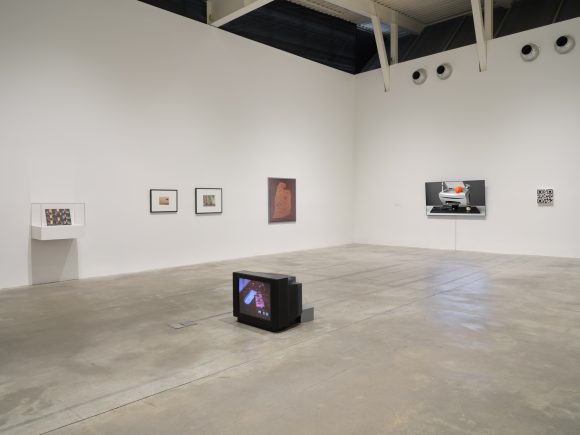
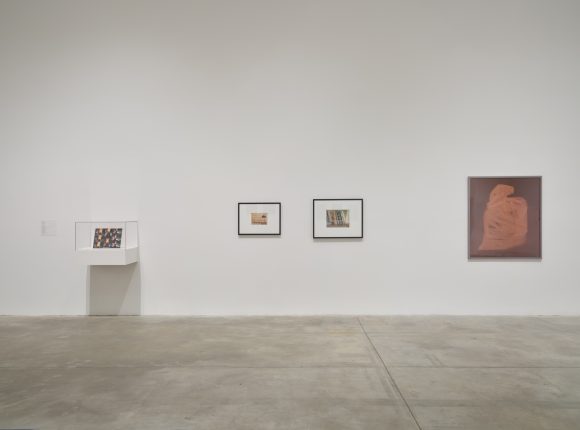

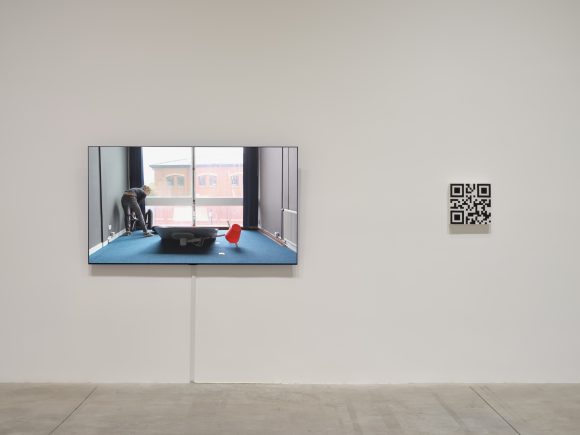
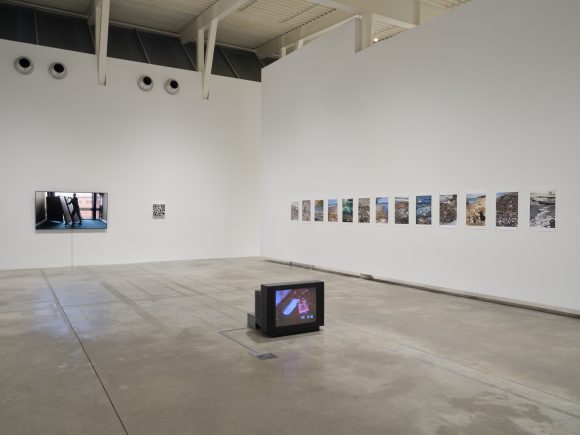


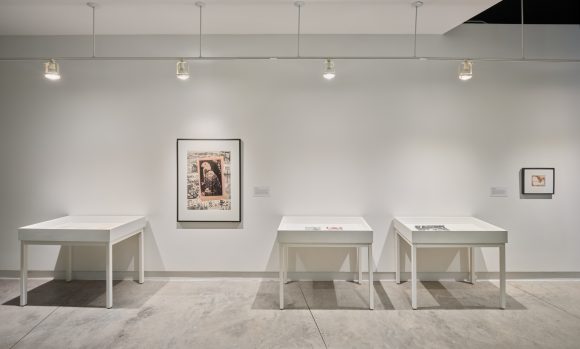

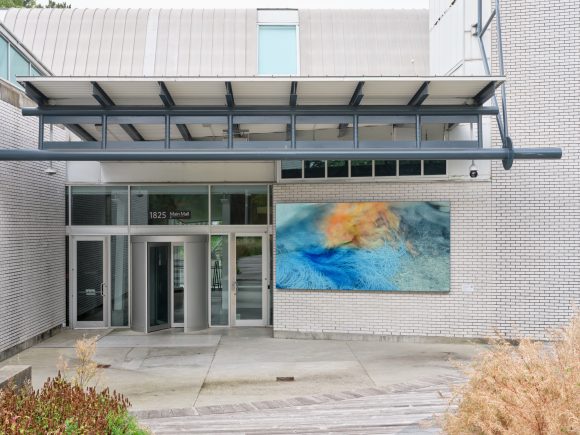
Image (above): Kelly Wood, Garbage Bag (Negative), 1997, part of the series Continuous Garbage Project. Collection of the Morris and Helen Belkin Art Gallery, anonymous gift, 2005
-
Weiyi Chang
CuratorWeiyi Chang is a writer and curator based in Toronto. Currently the 2023-24 Writer-in-Residence at Gallery 44, Chang’s research centres around the nexus between the cultural, social, economic, and political forces that sanction ecological violence, including climate change and biodiversity loss. Her writing has been widely published and she has curated projects in Canada, Germany, and the United States. Chang was a 2019-20 Helena Rubinstein Curatorial Fellow at the Whitney Museum of American Art’s Independent Study Program. She holds a MA in Critical and Curatorial Studies from the University of British Columbia.
Read More
-
Lorna Brown
Lorna Brown is a Vancouver-based visual artist, curator, writer and editor. Brown is a founding member of Other Sights for Artists’ Projects, and is an ongoing member of the Other Sights Producer team. She was the Director/Curator of Artspeak Gallery from 1999 to 2004, an artist-run centre focusing on the relationship between visual art and writing. Between 2015 and 2022, she was Acting Director/Curator at the Belkin, curating exhibition series such as Beginning With the Seventies that explored the relationship between art, archives and activism. Brown has exhibited her work internationally since 1984, and has taught at Simon Fraser University and Emily Carr University of Art and Design where she received an honorary doctorate of letters in 2015. Awards include the Vancouver Institute for the Visual Arts Award (1996) and the Canada Council Paris Studio Award (2000). Her work is in the collections of the Belkin, SFU Galleries, the National Gallery of Canada, the BC Arts Council, the Surrey Art Gallery and the Canada Council Art Bank.
Read More
-
Alexandra Dikeakos
ArtistAlexandra Dikeakos received her Fine Arts degree from UBC in 1974. Her art, which includes etchings, ink drawings, watercolours and other mixed media works, draws inspiration not only from contemporary themes but also from the myths and imagery of ancient cultures.
Read More
-
Geoffrey Hendricks
ArtistGeoffrey Hendricks (American, 1931-2018) was an artist whose representations of the sky in paintings,installations, and performances earned him the moniker of “Cloudsmith.” He developed an early affinity for nature, spending summers with his family on a farm in Vermont. After graduating from Amherst College in Massachusetts and the Yale Norfolk School of Art in Connecticut in 1953, Hendricks moved to New York City, continuing his studies at the Cooper Union School of Art and Columbia University until 1962. At Rutgers University in New Brunswick, NJ, where he was a professor from 1956 to 2003. He was associated with Fluxus since the mid 1960s and the noted publication Critical Mass: Happenings, Fluxus, Performance, Intermedia, and Rutgers University, 1958–1972, edited by Hendricks in 2002, chronicles some of these activities on the Rutgers campus and in New York City and served as a catalogue for the eponymous exhibition at the Mead Art Museum in Amherst that same year. His divorce from wife Nye Ffarrabas (formerly Bici Forbes) in 1971 that became the staged Flux Divorce and, on the obverse side, his celebration of the Flux Wedding between Maciunas and Billie Hutching in 1978 mark some of Hendricks’s radical contribution to Fluxus. Hendricks aspired to integrate art and life through a practice rooted in collaboration, a deep appreciation for nature and precepts of Eastern philosophies. Hendricks served on the Board of Directors of the Visual AIDS platform for over a decade. In addition to being represented in numerous international collections, Hendricks performed and exhibited internationally, appearing with Fluxus at the Biennale di Venezia (1990), the Nassauischer Kunstverein Wiesbaden (1992), the Walker Art Center in Minneapolis (1993) and the Musée d’Art Moderne et d’Art Contemporain de Nice (2003).
Read More
-
Stu Horn
ArtistStu Horn (American, 1946-2008) was a Philadelphia artist and graduate of Drew University. His work ranges from sculpture, collage and drawing to composition and musical performance. He was a prominent member of the mail art scene, an insular world of like-minded outsiders who exchanged photocopies of collages. Some of his creations were distributed under the name Northwest Mounted Valise, including a 1975 book of correspondence art sketches. Horn led several bands that were part of the Philadelphia avant-garde music scene, including Stu Horn and His Invisible Band, and Horn and Hard Art. Horn also composed songs for the popular children’s show Sesame Street.
Read More
-
Deborah Koenker
ArtistBorn in Chicago and educated in California, Deborah Koenker (b. 1949) immigrated to Canada as a young adult and is now Vancouver-based. Koenker’s early training in print media and drawing resulted in a BA from the University of California Santa Barbara, followed by post-graduate studies at Central St. Martins, London, England and an MFA from Claremont Graduate School, Claremont, California. She was instrumental in establishing Malaspina Printmakers Workshop in Vancouver and served as its first Director. She is Professor Emeritus in the Faculty of Visual Art and Material Practice at Emily Carr University of Art and Design in Vancouver. Koenker’s work has been exhibited widely in Canada, the US, Mexico and Spain including solo exhibitions at the Galeria Manuel Felguerez, Universidad Autonoma Metropolitana, Mexico City, the Ayuntamiento de Gracia, Barcelona, Spain, Chapman College, Orange and Rio Hondo College, Los Angeles; in Toronto at the University of Toronto and A Space Gallery; in Vancouver at the Contemporary Art Gallery, the Richmond, Surrey and Burnaby Art Galleries, the Vancouver Art Gallery, OR gallery and Presentation House. She has completed numerous artist residencies including at the Santa Fe Art Institute, New Mexico, Canada Council Paris Studio International Residency, The Klondike Institute of Art and Culture, Dawson City, Yukon, The Banff Centre, Alberta, Jiwar AIR, Barcelona, Spain, Linea de Costa, Cadiz, Spain and Obracadobra, Oaxaca, Mexico.
Read More
-
Richard Ibghy & Marilou Lemmens
ArtistsBased in Montreal and Durham-Sud, Quebec, Richard Ibghy (Canadian, b. 1964) & Marilou Lemmens (Canadian, b. 1976) work at the intersection of visual and performance art. Spanning across multiple media, their practice explores the material, affective and sensory dimensions of experience that cannot be fully translated into signs or systems. This investigation is fuelled by a critique of the rationale upon which economic actions are described and represented, and how the logic of economy has come to infiltrate the most intimate aspects of life. Their art practice investigates the ways in which the economic sciences and the theories of management represent the world. The notion of work, seen through the lens of its recent transformations, is central to Ibghy & Lemmens’ approach, as it embodies what Michel Foucault defined as biopower; that is, the capacity of economic thought to control, direct and orient the life of human beings. Most recently, their work has been shown at the 14th Istanbul Biennial (2015), La Biennale de Montréal (2014), 27th Images Festival, Toronto (2014), Quebec City Biennial (2014), Scène Nationale, Mulhouse, France (2013), Henie Onstad Kunstsenter, Høvikodden, Norway (2013), Centre for Contemporary Arts, Glasgow (2012) and the 10th Sharjah Biennial (2011). Recent solo exhibitions include Leonard & Bina Ellen Art Gallery and VOX-Centre de l’image contemporaine, Montreal (2014), Trinity Square Video, Toronto (2014), La Bande Video, Quebec (2014) and Monte Vista Projects, Los Angeles (2012). Their writings have been published in Le Merle, C-magazine, New Social Inquiry, and Pyramid Power. They have published two artist’s books Tools that Measure the Intensity of Passionate Interests (2012) and Spaces of Observation (2012).
Read More
-
Mike MacDonald
ArtistMike MacDonald (Mi’kmaq, 1941-2006) was a self-taught new media artist and gardener who returned to Nova Scotia after living and working in Vancouver for a number of years. He linked his love for nature, Indigenous knowledge and storytelling with technology in his video and photography installations. He once said that “each of [his] shots is like a commercial for nature.” One of MacDonald’s most renowned living projects began in the early 1990s when he would embark on yearly road trips across Canada, planting butterfly gardens along the way. These gardens are tactile living examples of his devotion to and admiration of the environment (the one at the Banff Centre is still maintained). MacDonald’s work has been shown internationally in solo exhibitions at venues including Sacred Circle Art Gallery, Seattle; Winnipeg Art Gallery; and Vancouver Art Gallery. His work has been included in group exhibitions at the Canadian Cultural Centre, Paris; Fujinomina, Mt. Fuji; Presentation House Gallery, North Vancouver; Kamloops Art Gallery; Heard Museum, Phoenix and Edmonton Art Gallery. His work was recently featured at Vtape, Toronto, in partnership with the 2022 imagineNATIVE Film + Media Arts Festival where he had previously been awarded the first Aboriginal Achievement Award for New Media in 2000. In 1994, MacDonald received the Jack and Doris Shadbolt VIVA Prize from the Vancouver Institute for Visual Arts.
Read More
-
Michael Morris
ArtistMichael Morris (1942-2022) was a painter, photographer, video and performance artist and curator. His work is often media based and collaborative, involved with developing networks and in the production and presentation of new art activity. In his roles as curator and, primarily, as an artist, Morris was a key figure of the West Coast art scene during the 1960s. Morris studied at the University of Victoria and then at the Vancouver School of Art (now Emily Carr University), followed by graduate studies at Slade School of Fine Art at the University College London, during the 1960s. There he became interested in the work of Fluxus and the European avant-garde, which had a profound influence on his work and on the Vancouver experimental art scene in general. In 1969 he founded Image Bank with Vincent Trasov, a system of postal correspondence between participating artists for the exchange of information and ideas. The intention of Image Bank was to create a collaborative, process-based project in the hopes of engendering a shared creative consciousness—in opposition to the alienation endemic to modern capitalist society—through the deconstruction and recombination of its ideological forms. Morris was acting curator of the Vancouver Art Gallery and the Centre for Communications and the Arts at Simon Fraser University and has had many guest curatorships at other institutions. In 1973, he co-founded the Western Front—one of Canada’s first artist-run centres—and served as co-director for seven years. In 1990 he and Trasov founded the Morris/Trasov Archive, housed at the Morris and Helen Belkin Art Gallery, to research contemporary art. He has established a strong international reputation and worked for many years in Berlin. Morris has participated in artist-in-residence programs both in Canada at the Banff Centre (1990) and at Open Studio (2003) and internationally at Berlin Kustlerprogramm (1981-1998). Morris has had numerous solo and collaborative exhibitions nationally and internationally, and is the recipient of numerous awards, including the 2015 Audain Prize for Lifetime Achievement in Visual Arts, the 2011 Governor General’s Award in Visual and Media Arts and an Honorary Doctorate in 2005 by Emily Carr University of Art + Design.
Read More
-
Robert Rauschenberg
ArtistRobert Rauschenberg (American, 1925-2008) was an American painter and graphic artist whose early works anticipated the Pop art movement. Rauschenberg is well known for his Combines (1954–1964), a group of artworks which incorporated everyday objects as art materials and which blurred the distinctions between painting and sculpture. Rauschenberg was primarily a painter and a sculptor, but he also worked with photography, printmaking, papermaking and performance. Rauschenberg received numerous awards during his nearly 60-year artistic career, among the most prominent being the International Grand Prize in Painting at the 32nd Venice Biennale in 1964 and the National Medal of Arts in 1993. Rauschenberg lived and worked in New York City and on Captiva Island, Florida, until his death in 2008.
Read More
-
Soft Turns
ArtistsSoft Turns is the collaborative effort of Sarah Jane Gorlitz and Wojciech Olejnik. Their collaborations employ found objects, readily available materials, D.I.Y. methods and experimentation to create videos, stop-motion animations and mixed media installations. Gorlitz is a settler of English and Mennonite descent, and holds an MFA from Malmo Art Academy. Olejnik immigrated from Poland to Canada as an adolescent and holds an MFA from the University of Waterloo. Recent research interests include controlled artificial environments such as greenhouses and data centres, plant-human interactions and the physics of information. They were artists in residence at the School of Environmental Sciences, University of Guelph (2016-19) and are currently artists in residence at Gallery 44 Centre for Contemporary Photography, where they are leading a reading group on decentralized intelligence called: “Thinking Through the Milieu.” Their work has been exhibited across Canada and internationally, most recently in Toronto at Vector Festival (InterAccess, 2024), the Plumb (2021), 8eleven (Images Festival, 2018) and The Art Museum at the University of Toronto (2018); and at Oakville Galleries, Centre Clark (Montreal), YYZ (Toronto) and Stride (Calgary); internationally at Southern Exposure (San Francisco), Skånes Konstförening (Malmö), Foundation 3.14 (Bergen), Videobrasil (São Paulo), Museum of Modern Art, (Moscow) and Friends (Glasgow). They currently work and live with their two young daughters in the Lakeshore Village Artist Co-op, on the lands of the Mississaugas of the Credit, the Anishnabeg, the Chippewa, the Haudenosaunee and the Wendat peoples, in what is commonly referred to as Toronto.
Read More
-
Howard Ursuliak
ArtistHoward Ursuliak (Canadian, b. 1960) is an artist and educator living and working in Vancouver. He received an MFA from the University of British Columbia where he studied with Jeff Wall and Mark Lewis. His work is based in an investigation of the historical limits of Western pictorial space in relation to global forms of reception of the photographic image. Central to this is the presence of the body in the agency of the photographer, the individual traces of those bodies whose actions have marked the land and the viewer’s body as singular instances that contribute to the enactment of the image. Ursuliak’s research interests feed both his professional practice as well as his pedagogical goals. A course offered at Emily Carr University, where he has taught since 2000, involved collaboration with Eduardo Cadava and Gabriela Nouzeilles of Princeton University in an elaboration of their international research project, The Itinerant Languages of Photography.
Read More
-
Kelly Wood
ArtistKelly Wood (Canadian, b. 1962) is a photographer and practicing artist whose research focuses on subjects that relate to the environmental impact of waste accumulation, waste economies and all forms of visible and invisible pollution. Wood is an associate professor in visual arts and photography at the University of Waterloo. She holds a diploma from Emily Carr University and an MFA from the University of British Columbia. Wood has written about Vancouver photography for international publications such as History of Photography and Philosophy of Photography in the UK. She has been committed to the subject of waste in the environment as a visual problem for an extensive period of time; her photographs of local and other garbage forms now reside in major national and international museum collections and are included in the monograph of her photography, The Vancouver Carts (Black Dog, 2016). Wood is a member of the research organization The Synthetic Collective.
Read More
Related
-
Exhibition
3 Sep – 8 Dec 2024
That Directionless Light of the Future: Rediscovering Russell FitzGerald

Jon Davies's work as a writer and curator is grounded in contemporary art, cinema and queer studies. His exhibition That Directionless Light of the Future features rarely seen works by American artist and writer Russell FitzGerald (1932-78) and his contemporaries, largely from the Bay Area, to explore how secret and subcultural knowledge complicates archiving and transmission.
[more] -
Exhibition
3 Sep – 8 Dec 2024
Koerner Library: Kelly Wood

Kelly Wood's Half Empty Bag and White Garbage (both 1997) are part of the exhibition An Opulence of Squander curated by Weiyi Chang at the Belkin, which considers our collective responsibilities as caretakers of artworks and as shapers of reconsidered and increasingly urgent narratives; more of Kelly Wood's work can be seen here.
[more] -
Exhibition
3 Sep – 8 Dec 2024
Outdoor Screen: Soft Turns

As part of the exhibition An Opulence of Squander, Soft Turns' ematerial (2019) plays on the Outdoor Screen from 9 am to 9 pm daily.
[more] -
News
21 Aug 2024
Reading Room: An Opulence of Squander

Curated by Weiyi Chang, An Opulence of Squander brings together works from the Belkin’s collection and archive with artists that consider concepts of surplus and excess to question the dual ascription of artistic work as a form of both luxury and waste. This reading room offers resources relating to the themes and artists present in this exhibition.
[more] -
Event
Tuesday, 10 Sept 2024 at 12:30 pm with Soft Turns
Tuesday, 8 Oct 2024 at 12:30 pm with Lisa Myers
Tuesday, 5 Nov 2024 at 12:30 pm with Camille Georgeson-Usher
Conversation Series: Of Other Earths
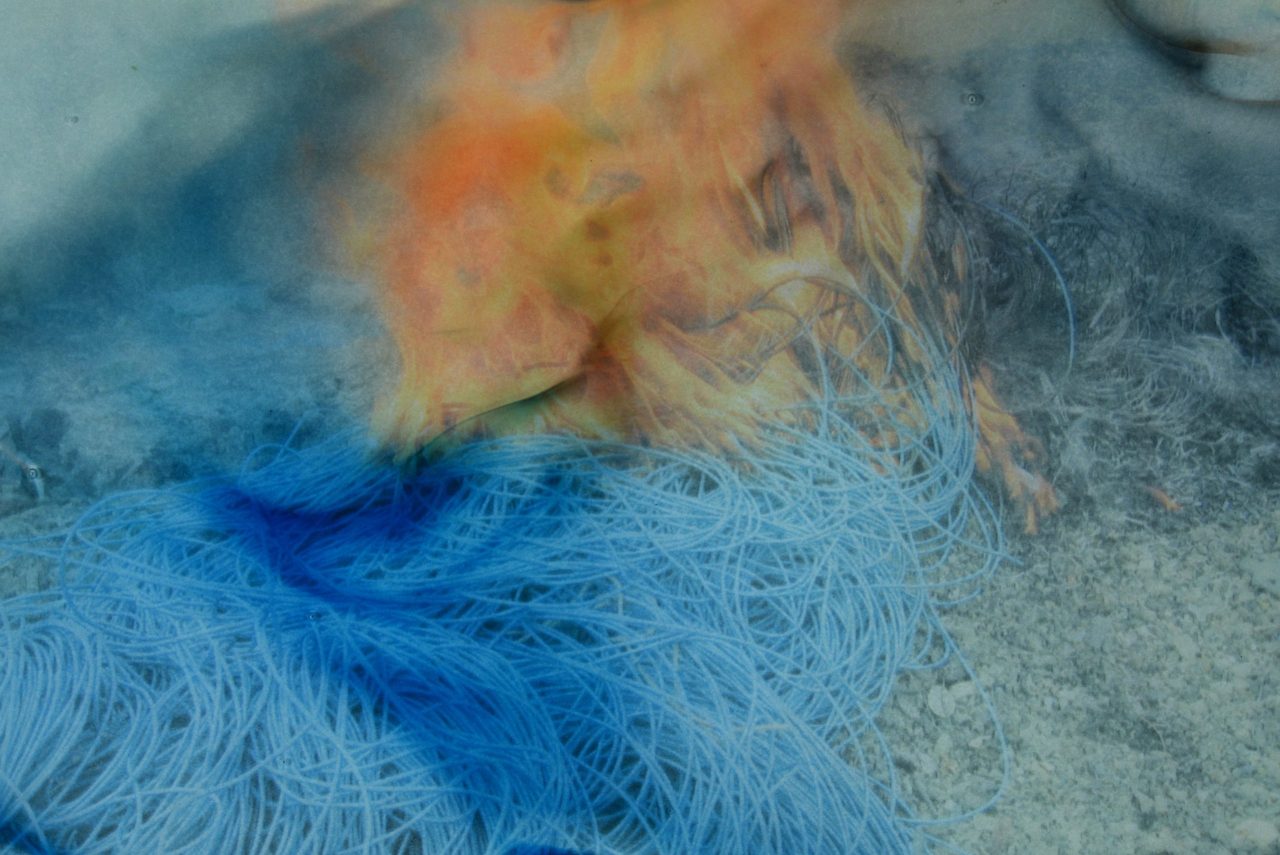
Join us for an online monthly three-part conversation series hosted by curator Weiyi Chang. In each session she will engage an artist or scholar about their work in the context of one of the provocations running through the exhibition An Opulence of Squander.
[more] -
Exhibition
21 March 2003 – 11 May 2003
Kelly Wood: Continuous Garbage Project 1998-2003
The exhibition of Kelly Wood’s The Continuous Garbage Project marks the completion of a long project. For five years, since Vancouver’s garbage workers’ strike in spring 1998 and concluding the week before the opening of this exhibition in 2003, Wood photographed her own garbage. The waste from Wood’s Vancouver home was neatly packaged and photographed against a studio backdrop, while the waste documented on her travels shows the objects wrapped or unwrapped in their immediate surroundings.
[more] -
Event
Wednesday, 4 Dec 2024 at 2 pm
Concert at the Belkin: Fall Exhibitions
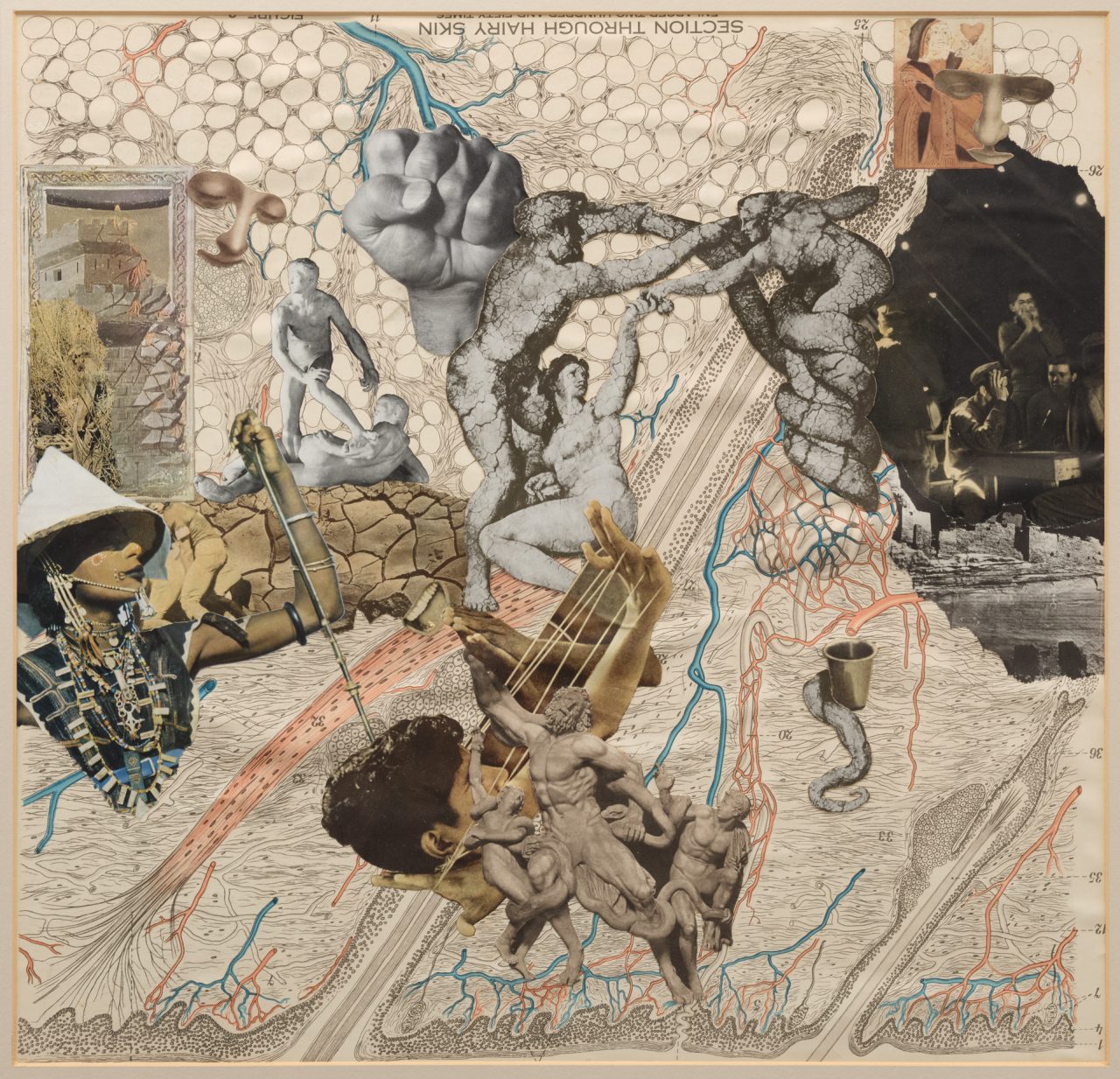
We are pleased to welcome back the UBC Contemporary Players to the Belkin for a concert inspired by the current exhibitions: That Directionless Light of the Future: Rediscovering Russell FitzGerald and An Opulence of Squander.
[more] -
News
21 Aug 2024
Reading Room: That Directionless Light of the Future: Rediscovering Russell FitzGerald
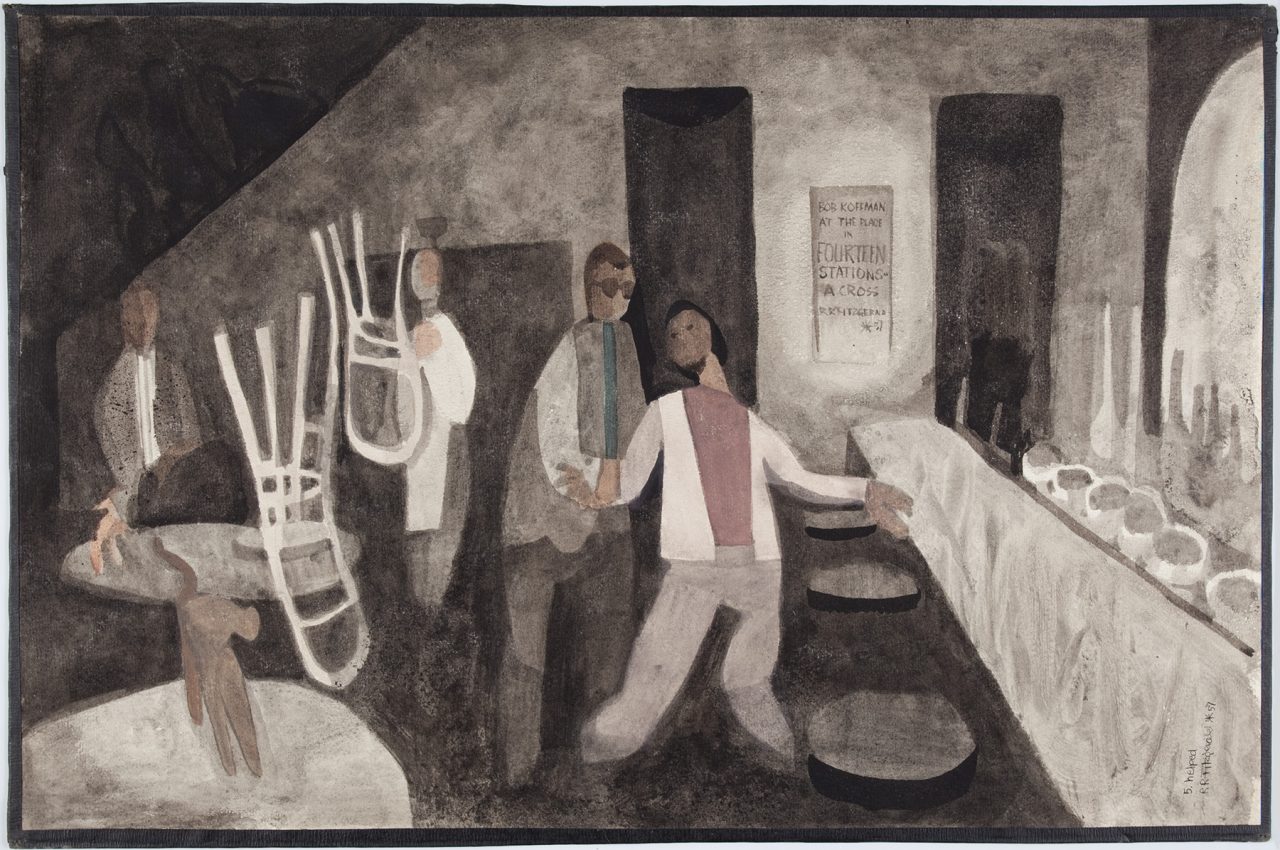
Curated by Jon Davies, That Directionless Light of the Future: Rediscovering Russell FitzGerald features rarely seen works by American artist and writer Russell FitzGerald (1932-78) and his contemporaries, largely from the Bay Area, to explore how secret and subcultural knowledge complicates archiving and transmission. This reading room offers resources relating to the themes and artists present in this exhibition.
[more] -
Event
Friday, 22 Nov 2024 at 3 pm
Symposium: Difficult Kinship

Join us for an afternoon symposium responding to That Directionless Light of the Future: Rediscovering Russell FitzGerald, an exhibition which grapples with a difficult and overlooked figure, exploring how the most idiosyncratic artists can crack open familiar historical narratives.
[more]